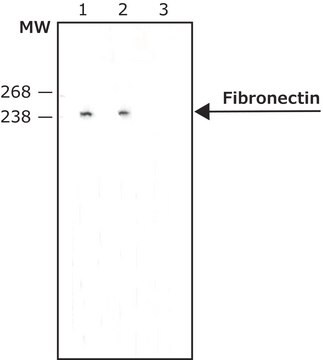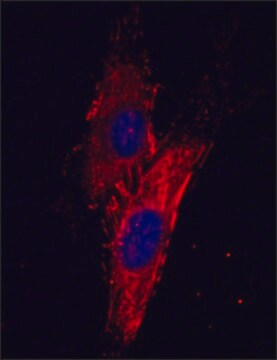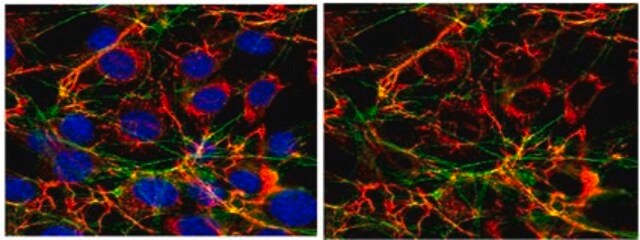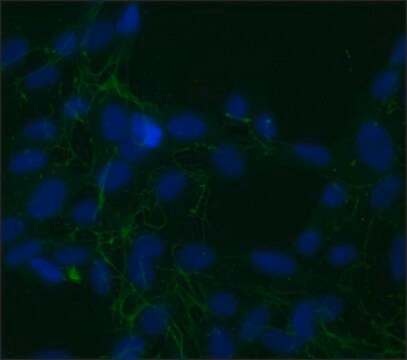추천 제품
생물학적 소스
mouse
Quality Level
결합
unconjugated
항체 형태
ascites fluid
항체 생산 유형
primary antibodies
클론
IST-4, monoclonal
분자량
antigen 240 kDa
포함
15 mM sodium azide
종 반응성
human
반응하면 안 됨
rabbit, mouse, goat, bovine, canine, chicken
기술
immunocytochemistry: 1:100 using cultured human fibroblasts
immunohistochemistry (formalin-fixed, paraffin-embedded sections): suitable
immunohistochemistry (frozen sections): suitable
indirect ELISA: suitable
radioimmunoassay: suitable
western blot: 1:250 using human fibroblasts cell extract
동형
IgG1
UniProt 수납 번호
배송 상태
dry ice
저장 온도
−20°C
타겟 번역 후 변형
unmodified
유전자 정보
human ... FN1(2335)
유사한 제품을 찾으십니까? 방문 제품 비교 안내
관련 카테고리
일반 설명
면역원
애플리케이션
Immunofluorescence (1 paper)
Immunohistochemistry (1 paper)
Western Blotting (1 paper)
- in immunohistochemistry
- in confocal microscopy
- in immunocytochemistry
- western blotting analysis
생화학적/생리학적 작용
면책조항
Not finding the right product?
Try our 제품 선택기 도구.
Storage Class Code
10 - Combustible liquids
WGK
nwg
Flash Point (°F)
Not applicable
Flash Point (°C)
Not applicable
시험 성적서(COA)
제품의 로트/배치 번호를 입력하여 시험 성적서(COA)을 검색하십시오. 로트 및 배치 번호는 제품 라벨에 있는 ‘로트’ 또는 ‘배치’라는 용어 뒤에서 찾을 수 있습니다.
자사의 과학자팀은 생명 과학, 재료 과학, 화학 합성, 크로마토그래피, 분석 및 기타 많은 영역을 포함한 모든 과학 분야에 경험이 있습니다..
고객지원팀으로 연락바랍니다.






